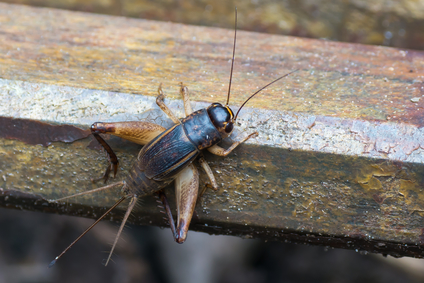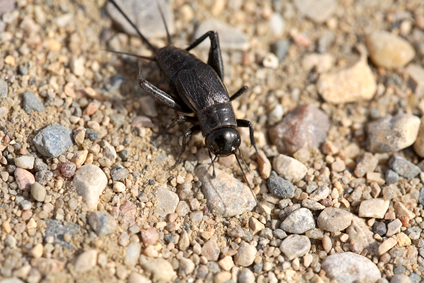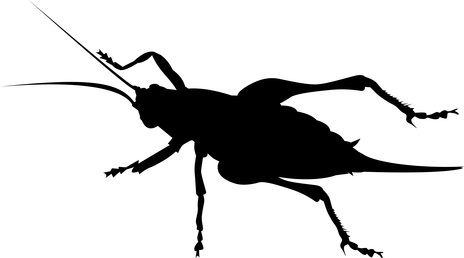Did You Know These Little-Known Facts About Crickets?
- Esther M.
- Mar-27-2021
- Pest Control
The multimedia cricket editor Peter Della Penna wrote an excellent article in the Washington Post titled, “Cricket in the United State Popularity Grows.” The 2012 masterpiece introduces its readers to the reality on the ground when it comes to Cricket as a sport in the US. He boldly proclaims that there are over 200,000 players cheered by over 15 million fans. Amazing right?
It is fantastic to know that something good about cricket exists beyond the chirping bugs many loathe. As cricket has grown in the United States like a secret society, so has this tiny animal crept into many homes. Its sound has become a comedy favourite, but the only problem is that you won’t love that unending monotonous cricket chirp in your home all night. Below you will find some interesting information about crickets. Enjoy the read:
Why do crickets produce such noises?

You have not slept peacefully for the last week and you just can’t understand why these crickets can’t shut up. Here’s to enlighten you; the crickets aren’t intentionally making the noise to disturb you. It just happens that you are in the way of their greater purpose. What does that happen to be?
A lot of cricket behavior is dictated by their mating patterns. The continuous cricket chirping you hear at night is their diligent attempts to father offspring.
But it oddly goes much deeper than that. For example, crickets have a strange mating ritual that involves chirping.
Most of you have probably heard the sound of chirping crickets on warm summer nights. But did you know that the sound you hear is actually the sound of crickets singing? Some crickets chirp during the day, but most of them start singing after sundown.
So why do crickets chirp at night? In short, crickets chirp at night for three reasons:
They were sleeping during the day as they are nocturnal
They are looking for food
They are calling out to females for mating Read more from Pest Control Zone…
How fast can crickets reproduce?

The number one factor that helps insects reproduce faster is how comfortable they are. For a cricket, the female will start laying eggs at 10 days and will only do so once she has mated. She keeps a supply of the eggs and mates again after two to three weeks. The female releases the eggs every two to three days, gladly multiplying.
The female, in fact, has larger wings than those of the male and, in addition, at the bottom of the abdomen, in the central part, has a long and quite obvious appendage: the egg-laying organ. Crickets live for about two and a half months. During their life they reach three different stages: egg, the neanic stage, and adult. When they reach maturity, crickets begin to reproduce, and females lay eggs: during their life they can lay up to several thousand (and a maximum of one hundred per day). The eggs hatch can in a period of time that varies between two weeks and forty days, depending on the temperature of the environment. The higher this is, the faster the eggs will hatch. Read more from 21 Bites…
How can you keep them out of your home?

Crickets like many other insects prefer staying out in the wild but sometimes they will seek shelter in homes. Crickets thrive in warm environments and they will get into homes looking for that. Also, note that some homeowners keep crickets for food. A danger that exists with this cuisine is if the crickets get an escape route and pull off a “Prison Break” on you. This could lead to a serious infestation.
Crickets can only enter the home if there is an opening for them to get in, and they can only survive if conditions allow. To prevent future infestations, caulk or seal all potential entry points, such as cracks in the foundation and gaps around doors and low windows. Keep the foundation and perimeter of your home free of tall grass, weeds, and mulch, and never store firewood or other organic material or debris near the home, which can allow crickets and other pests to use the wood for shelter and then make their way indoors.
Additionally, crickets are known to be attracted to lights once the sun has set. To prevent enticing them to your porch or windowsill, use yellow sodium-vapor lighting outdoors rather than white or mercury vapor lights. When possible, place lights on poles with the lighting directed toward the door or area you wish to light. Read more from The Spruce…
With all this information, it is worth noting that your home could be a living nightmare. The crickets are almost ruling your kingdom and you don’t know what to do. As a Maryland Resident, Backyard Bug Patrol is here for you. We are the best in the State dealing with all kinds of pests including effective indoor pest control programs. Contact us today to take care of that pest problem.
